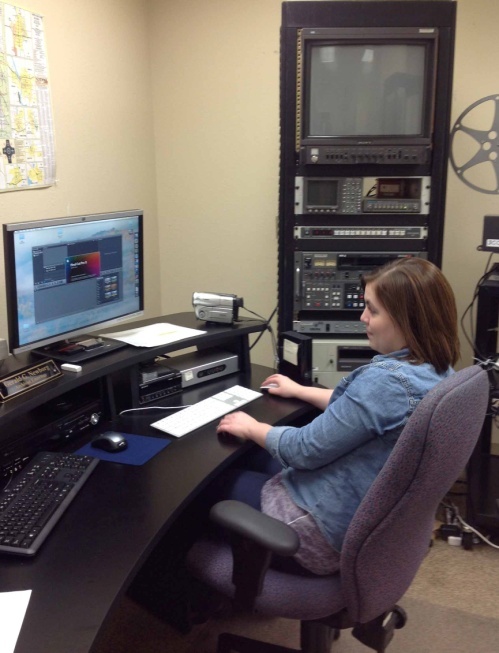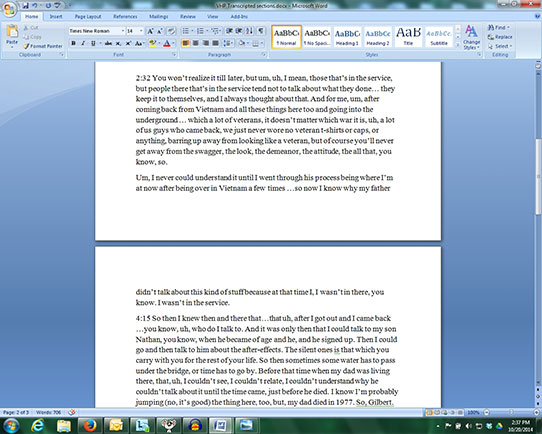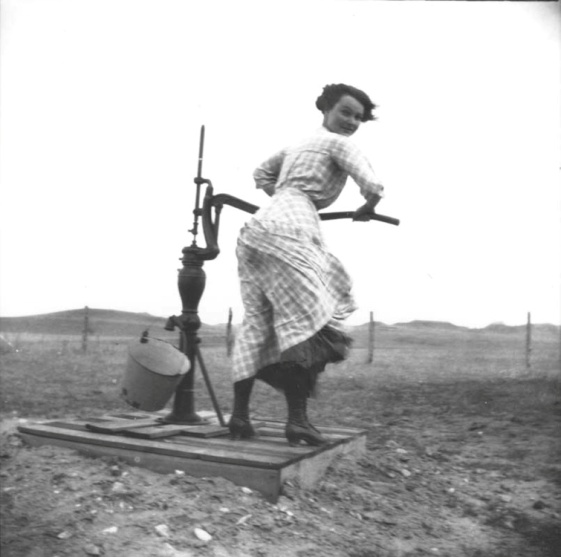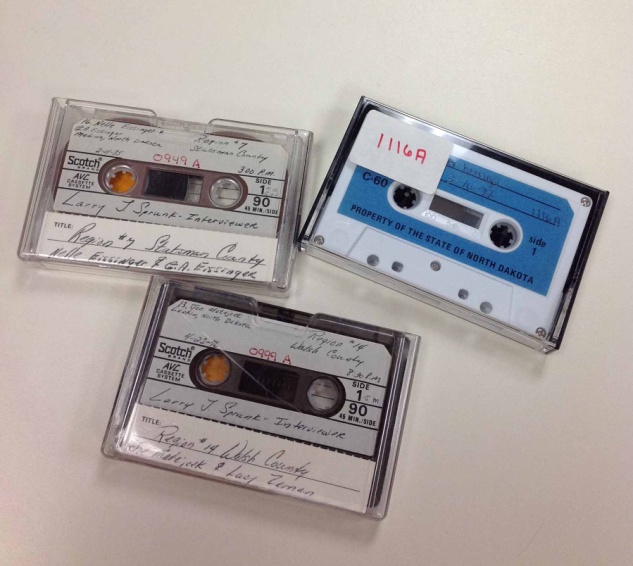
This is the space where I digitize audio cassettes, reel-to-reels, records, and even CDs into mp3 and wav files. I know, it looks messy, but I have a system! I am currently the only staff member working with audio formats.
I recently attended an amazing summit on archiving audio and video history collections. The speaker, Doug Boyd (you can follow him on Twitter, if you’d like), runs the Louie B. Nunn Center at the University of Kentucky.i
I, along with the rest of the attendees, listened with rapt attention as Boyd discussed the widespread implications of keeping and using these collections. Some of it was very technical, and some of it very poetic, in a way. As the time went on, his talk and discussion afterward helped me realize the depth of something I already believed: audio and video collections are a different breed of history.
Of course, objects and documents can be studied for information. (Danielle Stuckle, Outreach Coordinator, discussed how these historical items can be disseminated into information in her first blog post here). However, audio and video collections are best consumed in the form they are given to grant us the full impact of their importance and meaning.

Lindsay Schott, Archives Specialist, does the majority of work with film footage. This is the space Lindsay uses to digitize video.
For example—if you see an old cassette tape, you can examine it as an object…but it won’t tell you what is on it. *If* there is an accompanying transcript—and let’s just say that it is actually typed without error or sounds cut out, which is not always the case—you can glean different information from that. But if you listen to that old cassette, you will learn so much more. You can hear the accents of the people talking; you can consider the way questions are asked; if you hear noise in the background, you can think about what is going on if the interviewer is distracted; and you can intuit more meaning, even in where the speaker is hesitant, and where he or she is fast to answer.
Here is another example. This screenshot shows a partial transcript of an interview that I conducted with ND Vietnam veteran Paul Good Iron.ii

Now, here is the audio.
“Um” can take on more meaning when you hear it than when you read it. Even knowing that a speaker said it at all can change the impact of the story. The spoken word doesn’t really make for clean reading after all.
The challenge with these collections is that it is often easier and faster for researchers to read through a transcript than it is to listen to the audio. Once we have a transcript, it is easily digitized, and can be sent around the world—and researchers using it can search the text by word or read through it at their leisure. That is one of our goals, after all, as you avid readers may recall from my first blog post.
However, I invite you to consider these facts:
- Transcripts can be expensive. It takes a bit of money and a lot of time to get interviews transcribed, and that is not always possible—especially as collections grow.
- Transcripts are not always completely accurate. Have you ever read a transcript and noticed a name misspelled, a word changed, or some other error? Heck, have you ever tried to transcribe something spoken in a thick accent? Possibly where the interviewee lapses into a language that is familiar to them, but foreign to you? Yeah.
- Transcripts are often “cleaned up.” People don’t like to publish all of those uhs and ums and random swearing that may occur. Like it or not, there can be a loss of some authenticity.
-
Audio and video collections are often a primary source, and transcripts are a secondary source. Let me describe this picture for you. There is a woman with her back turned to the camera, pumping water from a well. She is looking over her shoulder. She is wearing a long dress. The vast prairie stretches out in front of her. It’s very windy. Do you want to take my words as a primary source? What did I miss? Granted, having some information on the photo helps, but what feelings can I invoke with words that can’t be seen through the image? That concept holds true with audio and video.

SHSND 0003-184: Mrs. Ted (Ellen Roberts) Pope, pumping water in Slope County.
- There is no easy way to get a good transcript. There is no easy software you can download, no quick way to drop a file somewhere and pull the audio from it.

Oh, the ubiquitous cassette. This is what makes up the majority of our oral history collection.
Yes, it is nice to have those transcripts. They are very useful. But in the end, would you rather read a biography about your great-grandfather (written by him or not), or would you rather hear his voice, speaking about the hardships he went through in settling the land he later would own?
It’s definitely a point for discussion, and each repository must make its own choices. But hopefully, that primary source of raw video and raw audio will find a prime spot on your shelf.
i The Louie B. Nunn Center has a phenomenal setup, with multiple ongoing projects, and a small team taking in and processing more audio and video collections in a year than some repositories currently have in their collection. As a point of comparison, we do have several expansive audio and video projects and multiple smaller collections in our Archives.
ii As a side note, transcribing this section (two minutes) took me half an hour. Or maybe it just felt that way.

